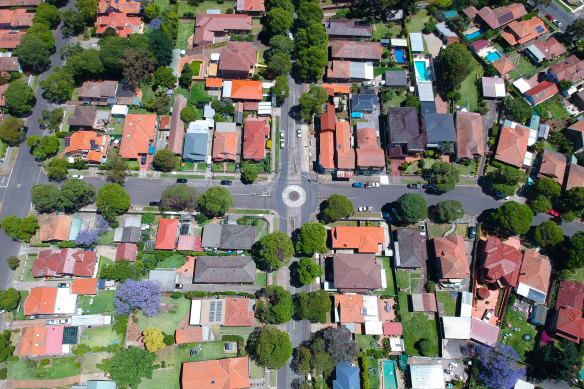- Analysis
- Money
- Borrowing
- Interest rates
This was published 2 months ago
Can’t bank on the RBA? Mortgage holders may have to get their own rate cut
By John Collett
Variable rate mortgage holders hoping to see relief on their repayments may need to take matters into their own hands after the Reserve Bank of Australia, which sets the cash rate, signalled there was unlikely to be a rate cut this year.
Home owners with variable rates wanting to cut their monthly payments may have to haggle with their lender for a lower rate or shop around for a better deal.

With official interest rates likely to remain on hold, home owners have to work out how to get themselves a mortgage rate cut.Credit: iStock
Many of the lowest mortgage interest rates are available to those who have a decent amount of equity in their property, particularly those with equity of at least 30 or 40 per cent, says Sally Tindall, data insights director at comparison site Canstar.
The average variable rate, as reported by the RBA, is 6.37 per cent for owner-occupiers.
“Owner-occupiers, in particular, should be aiming for a rate that’s under this mark – ideally one that starts with a 5,” Tindall says.
Haggling with your lender or refinancing to get a cut of half a percentage point on an interest rate of 6.37 per cent would reduce the minimum monthly repayment on a $600,000 mortgage with 25 years left to run by $184, Canstar figures show.
A half a percentage point cut on a mortgage of $1 million would reduce the borrower’s monthly repayments by $307. Almost 30 lenders listed on Canstar’s database offer at least one advertised variable rate under 6 per cent, after excluding first home buyer specials and green loans.
They are mostly from smaller banks, credit unions and non-banks. “To get a lower rate, borrowers might have to refinance to a lender they’ve never heard of, or play hardball with their current lender to get a better deal,” Tindall says.
While those with at least 20 per cent equity have plenty of choice of lenders for refinancing, those who have less than that would typically not refinance because they would probably have to pay the cost of lenders’ mortgage insurance, Tindall says.
Similarly, the costs associated with switching, such as a discharge fee from the borrower’s existing bank, government fees and upfront fees from the new lender, can sometimes deter people from refinancing.
“Don’t let any fees associated with switching put you off until you’ve sat down and done the calculations yourself; some of the fees the new lender is looking to charge can be up for negotiation,” Tindall says.
“You might find the savings from being on a significantly lower rate means you can recoup these costs within months.”
- Advice given in this article is general in nature and is not intended to influence readers’ decisions about investing or financial products. They should always seek their own professional advice that takes into account their own personal circumstances before making any financial decisions.
Expert tips on how to save, invest and make the most of your money delivered to your inbox every Sunday. Sign up for our Real Money newsletter.